Images from my Final Major Project
A triptych of tableaux/dioramas/stage sets taken from a speculative story based on a found document.
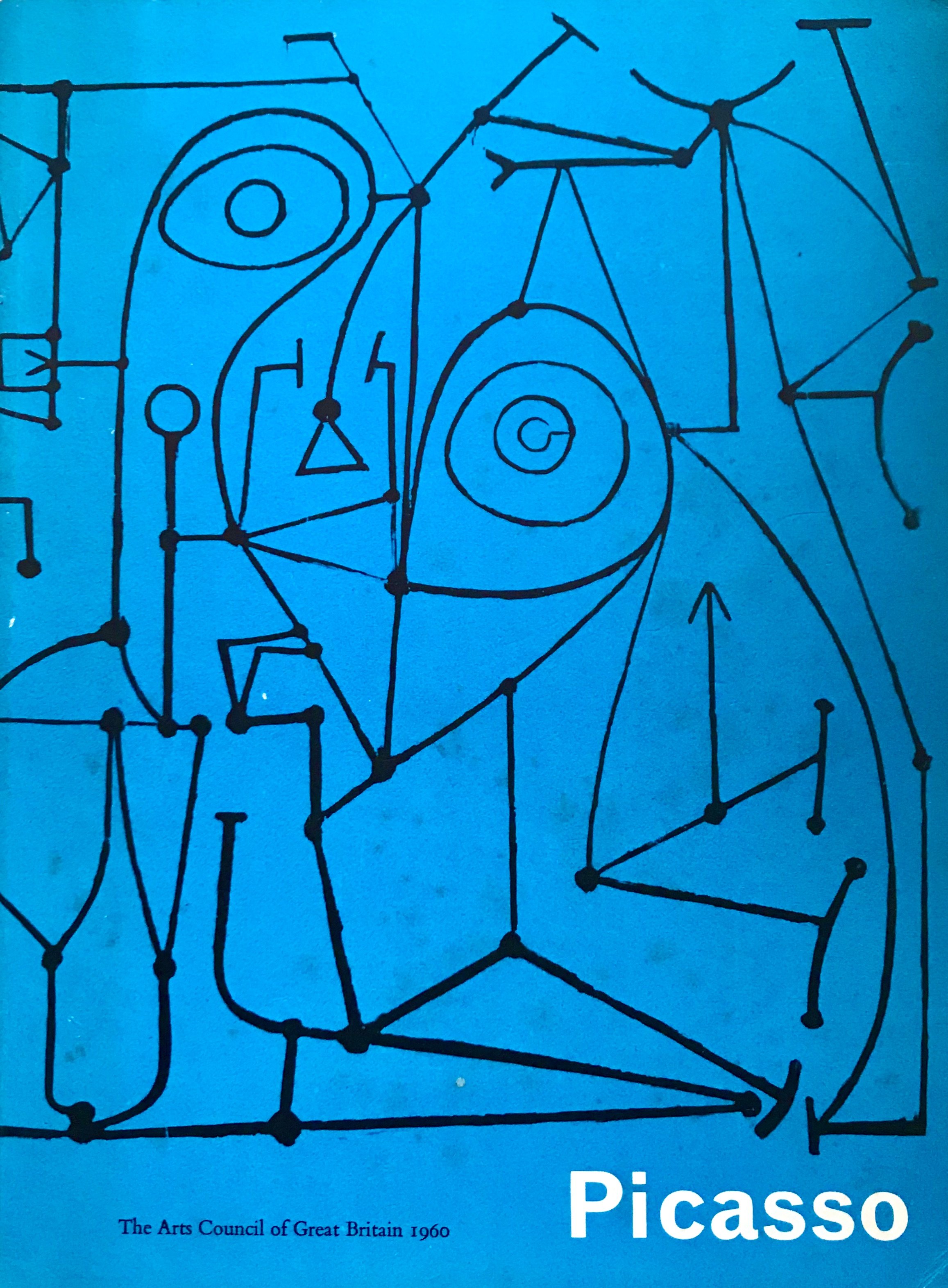
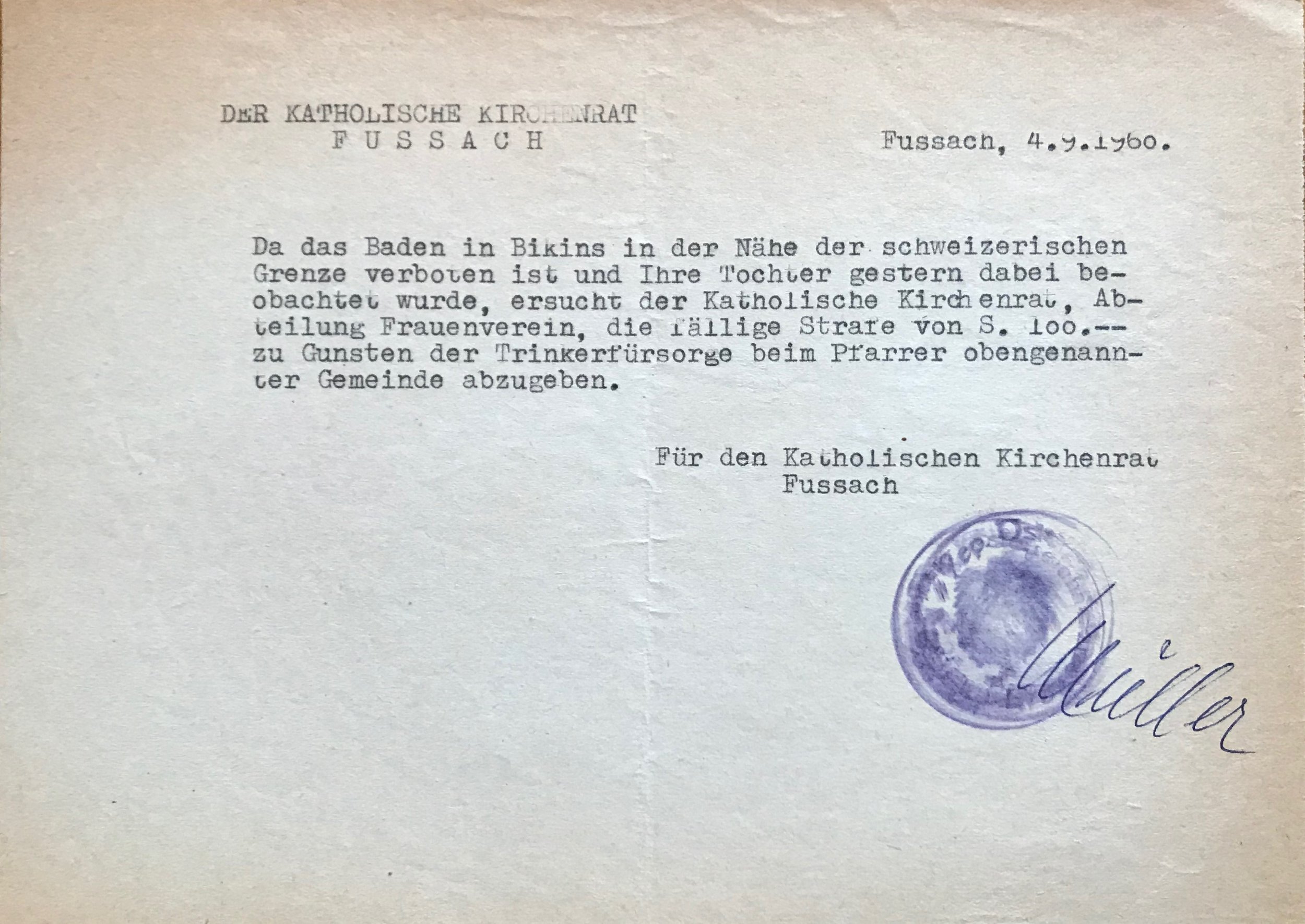

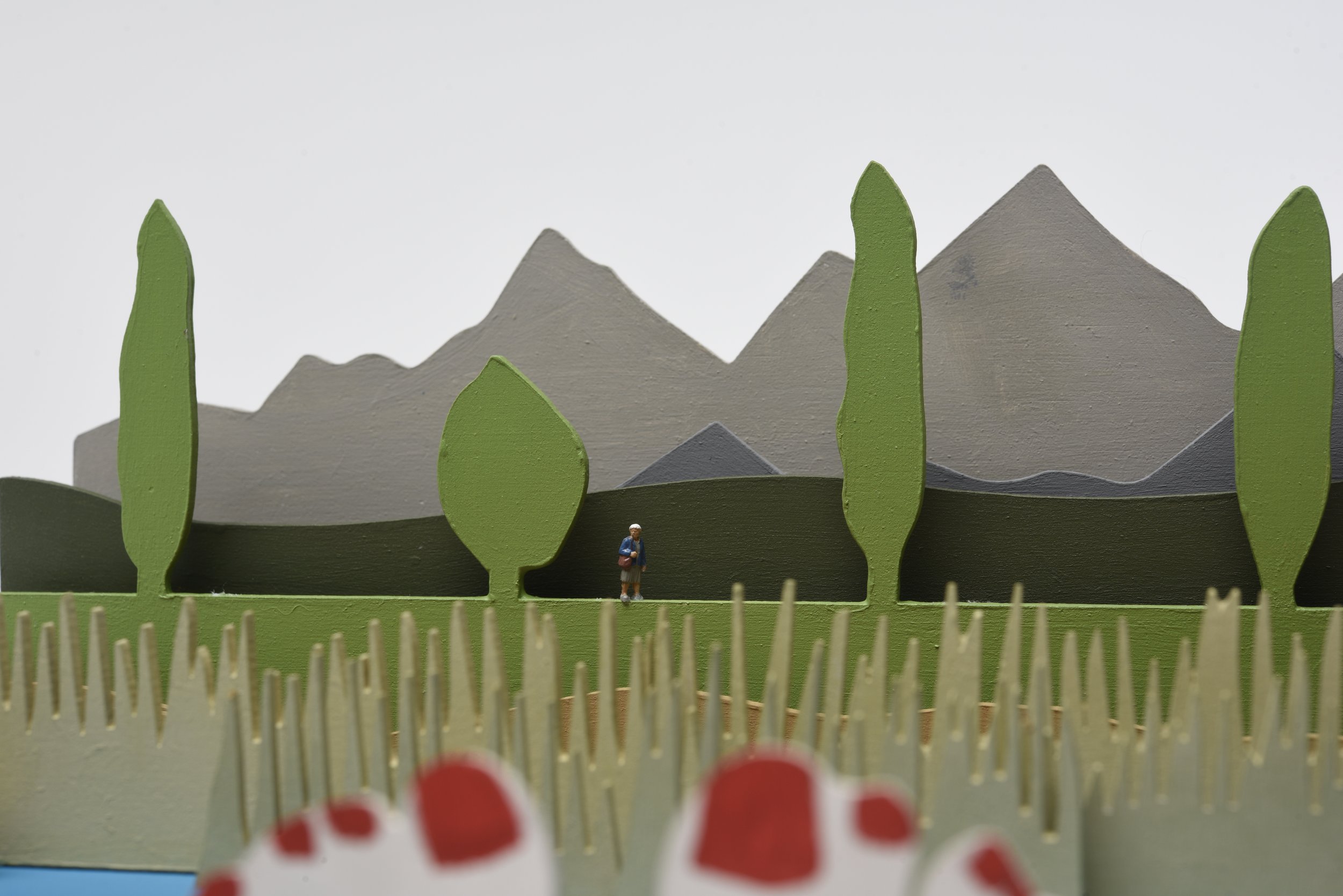
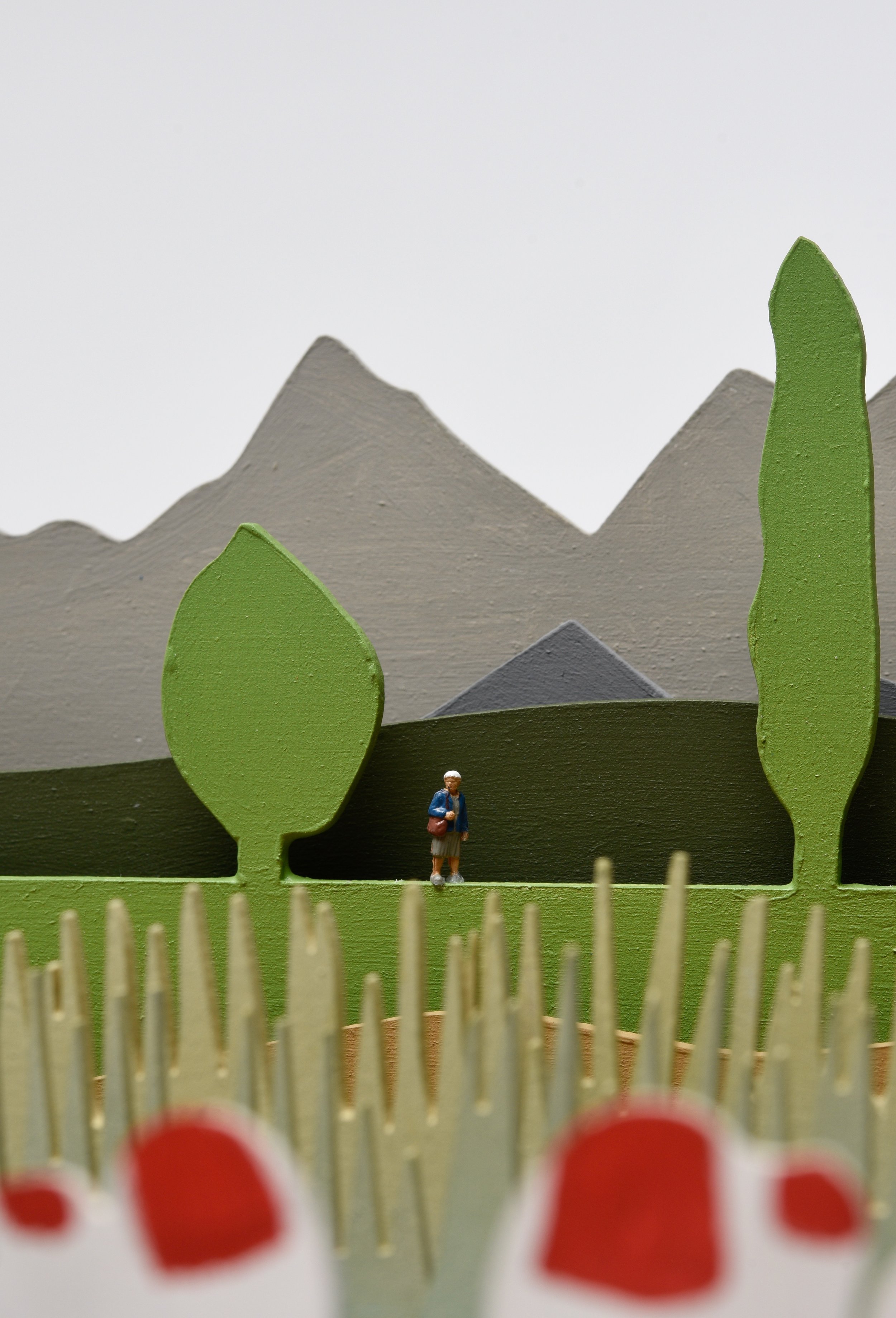
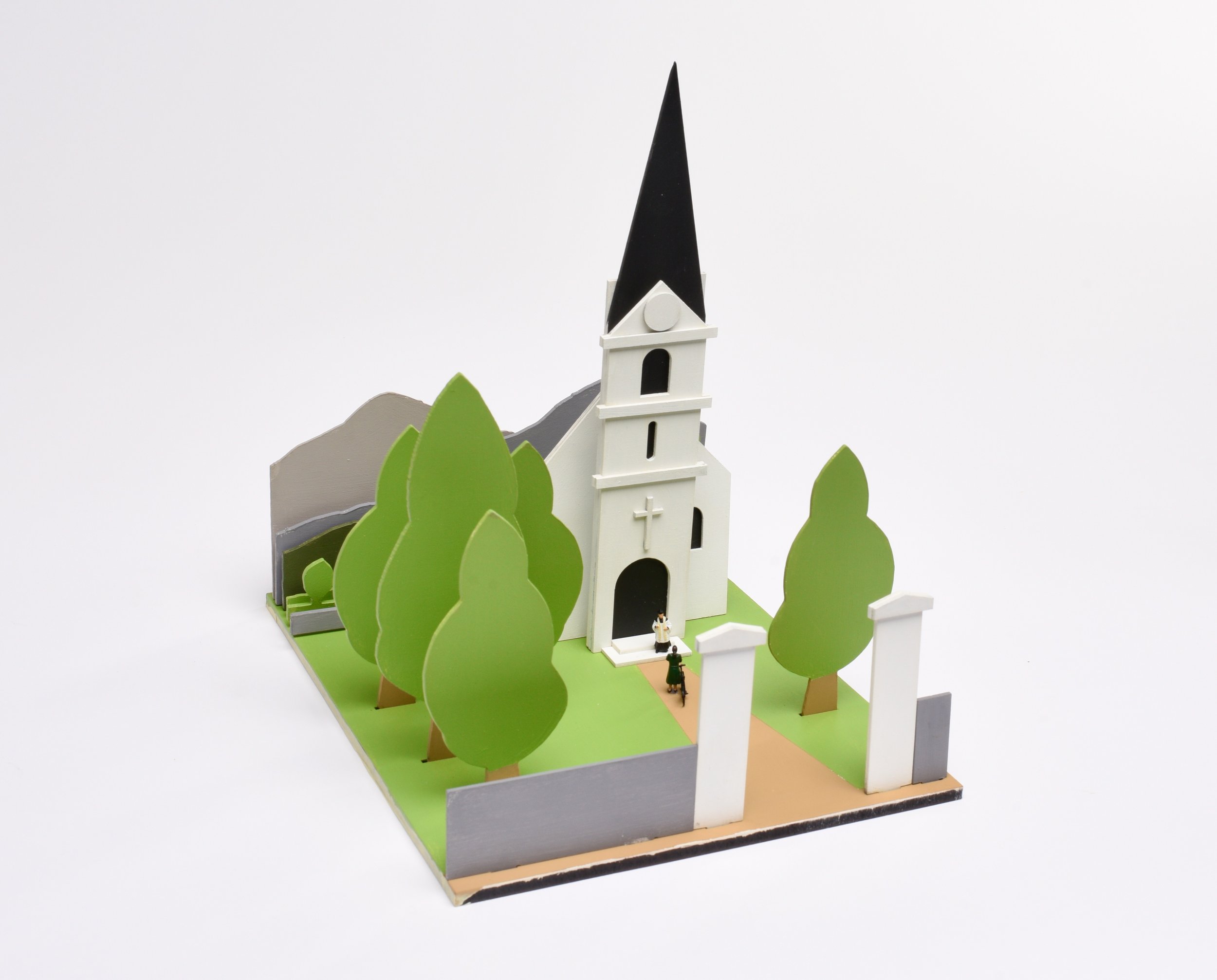
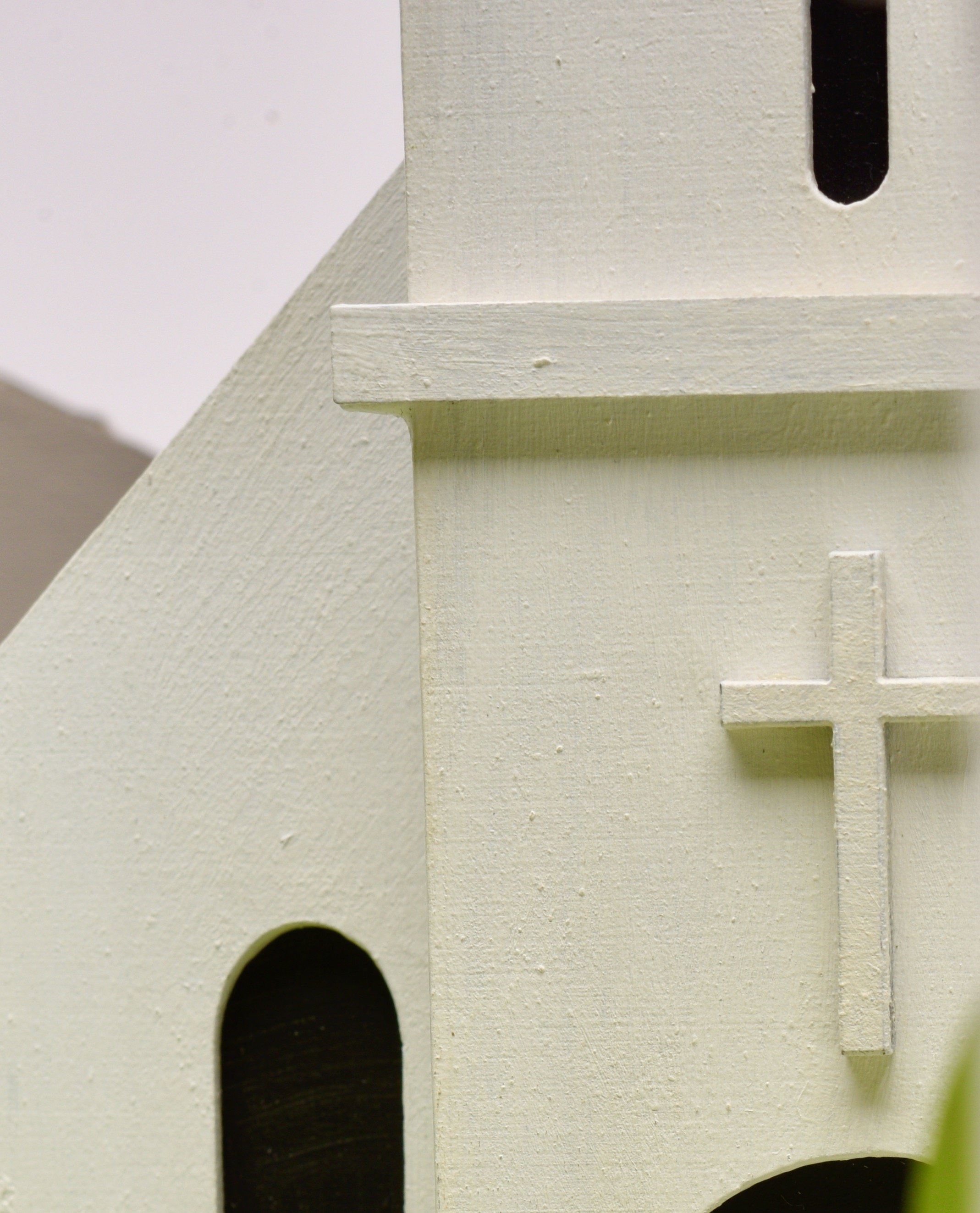
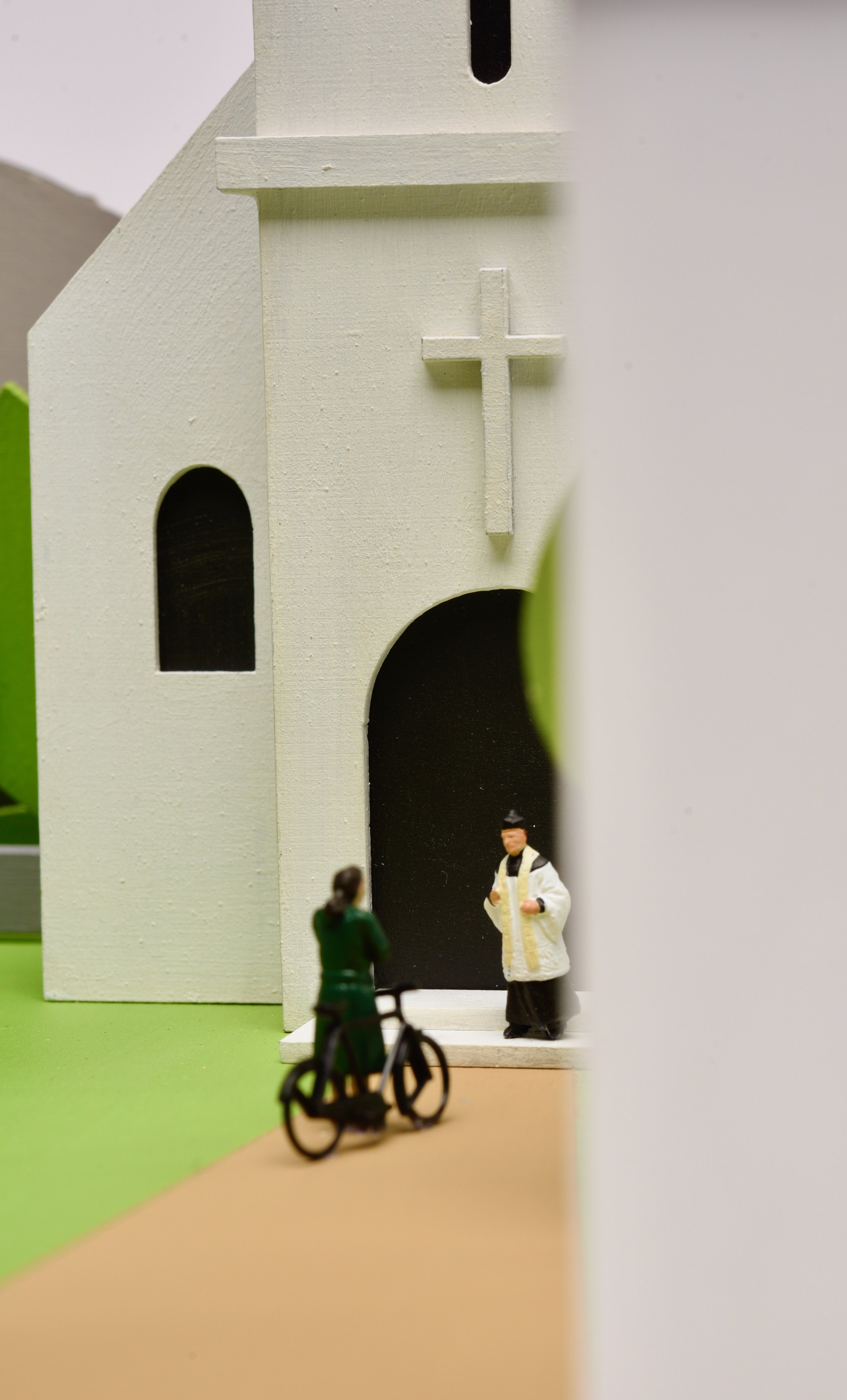
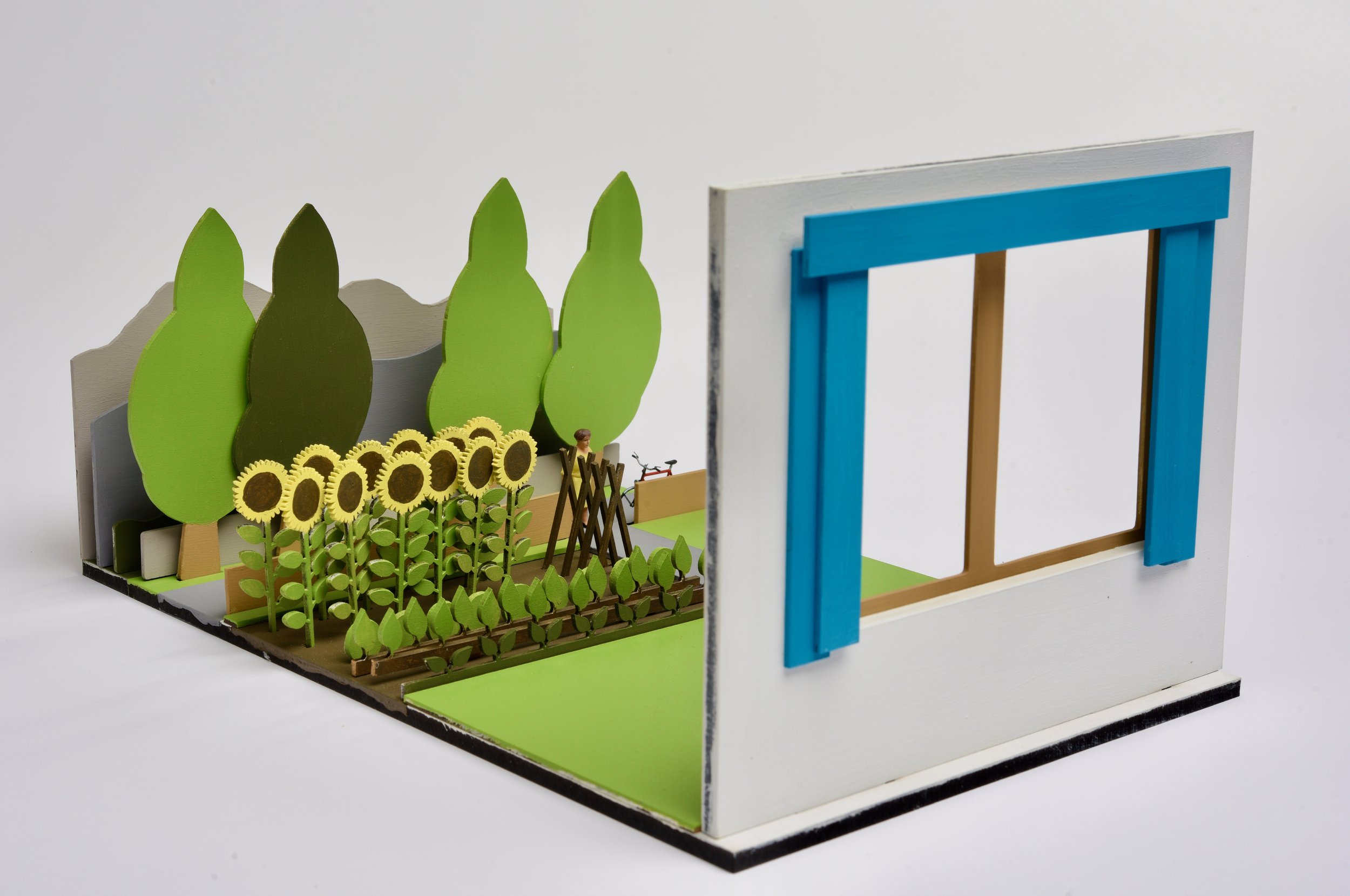

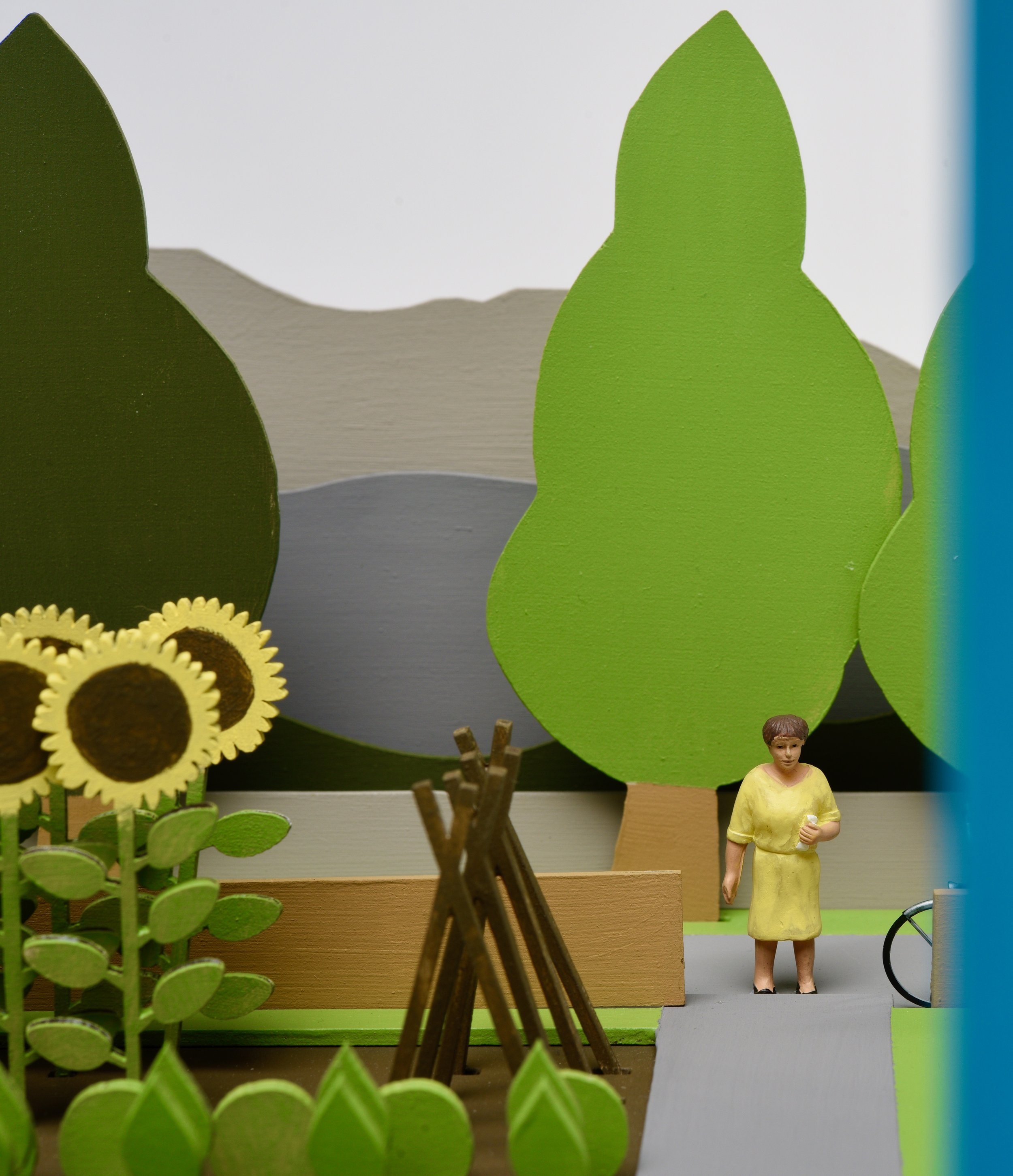



The subject for this project fell into my lap, as it were.
During Lockdown, Jim, my father in law, used the time to scale down his extensive library of art books. As a result, he gave me, amongst other things, a copy of the catalogue for the 1960 Picasso exhibition at The Tate which he thought I might like.
In itself, it is a lovely thing, but whilst I was leafing through I found, tucked between pages 38 and 39, a type-written note. It had obviously been there for some time as it discoloured the pages. Written in what I guessed was German, it was dated June 1960 so I wondered if it could have been linked to the exhibition. I sought out a native German speaker to provide a translation and its fair to say I was surprised with what they gave me.
The note was from the The Parish Council (Woman’s Section) of the Catholic Parish of Fussach informing a mother that her daughter had been seen bathing in a bikini near the Swiss border. As this was forbidden the mother was to be fined 100 Austrian shillings which would be given to the organisation responsible for the care of drinkers.
I began researching Fussach to get an idea of the context for this strange communication and found it is a small town on the shore of Lake Constance (Bodensee) in Vorarlberg province of Austria. It looked like a beautiful if sleepy sort of place that you could imagine a bikini in 1960s causing quite a stir.
As I dived ever deeper, I realised I needed to explore and celebrate this strange story. I also decided that I would try and embark on this project from a less obvious angle. Very quickly I came to the conclusion that, whatever form the output took, there would be no representations of young girls in bikinis.
As far as I could see that there was nothing to be gained by engaging “The Male Gaze” and casting the girl as an object in rather than the subject of the work. One of the other considerations I had was about my suitability to be the teller of this story and whether I, as a white middle aged man, could do justice to a narrative centred around a young woman from a different time and culture. Even referring to her as The Girl initially made me feel slightly uncomfortable but without any details regarding her age, it became a useful shorthand and carries no inferences from my side.
This led to another set of decisions or parameters, namely I would make no attempt to find or identify The Girl in question. Initially I was being tempted to make this the focus of the work but quickly realised that there was nothing to be gained by doing so, although I suspect it would not be too hard to do. I had initially contacted the Parish Office in Fussach to see if they had any archives that might shed light on the scenario and I’m sure that would have contained all the clues I needed to identify her. They declined to reply on two occasions, so I took this as a sign not to pursue this line any further.
I decided that the output would need to be speculative by its very nature, so in my head I began scripting (or story-boarding) a visual narrative based on the details I had. I then realised if I wanted to use this script idea, I would need to be selective in the scenes I depicted in the final work.
I was reminded of the photographers that take stills on movie sets to create a record of the story being created. And thinking about the idea of how movie sets are created in detail for a single “tight” shot and how they are slices of time and place created solely to tell a story that began in someones head based on a few ideas.
Ideally I would have visited Fussach (and even contemplated doing so) but in the end I managed to satisfy my curiosity for detail with online images. It is truly a beautiful location - soaring mountains, rich pastoral farmland and the lake with its beaches. It’s difficult to think of a more tranquil setting. The more I studied the scenery the more, I wanted to juxtapose this tranquility with an air of repression and voyeurism to create a series of unsettling tableaux.
I chose to depict three of the crucial scenes in the “script” as I imagined it. One of the lake where The Girl is spotted swimming, another in the Churchyard where her “crime” is reported to the Parish Priest and the third at her home as the note is about to be delivered. I cast the Women’s Section of the Parish Council in the role of agents of the Church, and as such, part of a repressive system.
There is an influence here from my own Catholic upbringing in that these tableaux can be seen in the context of the Stations Of The Cross seen in all Catholic churches which depict Jesus’s journey form condemnation to crucifixion.
After many iterations I was eventually happy with the story and how the tableaux were beginning to look. I chose a subtle palette of colours which referenced European comic books and added hopefully to the air of “otherworldliness”.
The series of photographs I subsequently took of the tableaux formed my submission for grading. Over 3 sessions in the studio, I feel I managed to capture the essence and aura of the scenes. The camera takes the place of the Girl, obscured and peering into the scenes. She remains hidden throughout, her presence suggested only by clues.
It’s impossible not to speculate what happened as the story unfolded and how accurate a representation I have managed to make. Of course, as a speculative piece of work, accuracy was never the aim but it is hard not to wonder if the whole episode affected the Girl’s feeling towards the Church and was a spark to ignite a period of personal rebellion. Or did the “status quo” remain in place and life carry on as if nothing happened.
